used for3D printingof
biology
Inks usually have appropriate rheological properties, which are also3D printingThe most important factor in material selection. In addition, the ink also needs to meet the requirements of high shape fidelity and ideal microenvironment.The team of Associate Researcher Zhang Ting and Associate Professor Xiong Zhuo from Tsinghua University has developed a cell-loaded microgel biphasic bioink (MB), which can be used in biological applications such as tissue engineering and soft robotics.
medicine
The field has huge application prospects.
The related paper “3D Printing of Cell-Laden Microgel-Based Biphasic Bioink with Heterogeneous Microenvironment for Biomedical Applications” was published in the journal Advanced Functional Materials.
Compared with the traditional bioink, the bioink consists of two parts: (1) the microgel in the close-packed state is a discrete phase, forming the first network structure of the bioink; (2) the hydrogel precursor Penetrates into the voids as the continuous phase, forming a second polymer network between the microgels. First of all, the researchers used GelMA as a carrier and found that the MB bioink showed good extrusion and structural stability during the 3D printing process, and could show obvious two-phase, and the gel formed by the ink could satisfy the proliferation and diffusion of cells. . This method has great versatility, allowing cell-loaded microgels to be prepared from a variety of materials, sizes and cell densities. (figure 1)
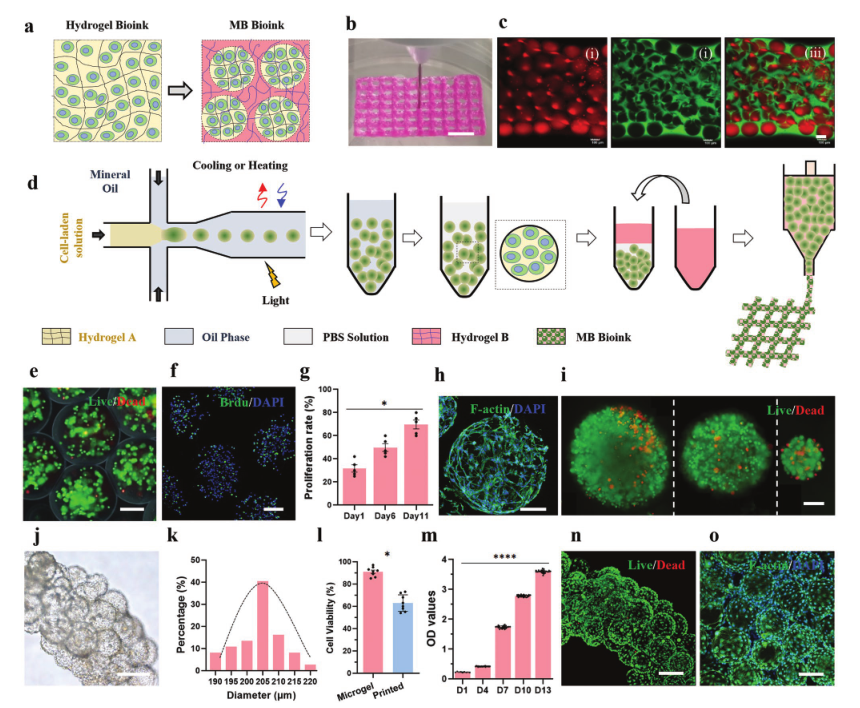
The rheology of bioinks is critical for extrusion bioprinting. We compared the rheological properties of MB bioinks with bulk hydrogels and conventional microgel-based (JM) bioinks. As expected, all ink viscosities decreased with increasing shear rate at room temperature, and the addition of the microgel component increased the viscosity of the MB bioink. Compared with conventional GelMA hydrogel ink, the viscosity of MB bioink is independent of temperature. Using sodium alginate and GelMA as ink precursors, the researchers found that the rheological properties required for extrusion printing depend on the closely packed state of the microgels, independent of the composition of the microgels and the second network.
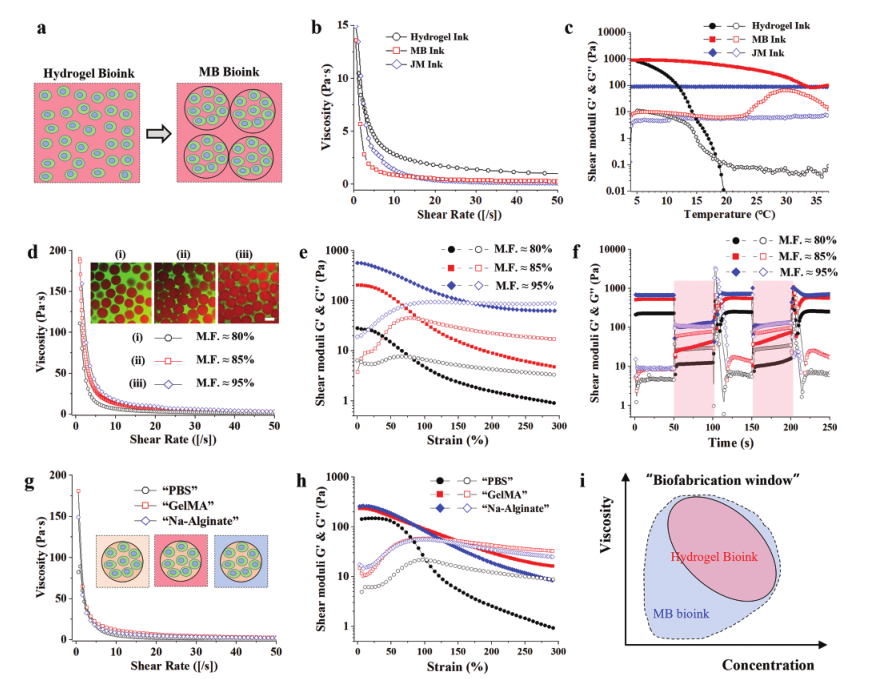
Next, the researchers studied the printability of the MB bioink, and found that due to the small resistance, the microgels were uniformly extruded by the interstitial hydrogel precursor, and the crosslinking was further stabilized after passing through a 405nm lamp, and there was good interlayer between adjacent layers. interconnectivity. And the bioink can print a variety of complex biomimetic structures of human organs. (image 3)

The researchers then compared the mechanical properties of the different inks. Compared with the GelMA bulk hydrogel, the MB bioink and JM bioink exhibited greater elasticity. In addition, for the MB bioink, the microgels exhibited greater elasticity under compressive conditions. is further confined within the second network and thus has a relatively high elastic modulus compared to the JM bioink. MB bioinks exhibit extraordinary structural robustness and cycling performance. (Figure 4)
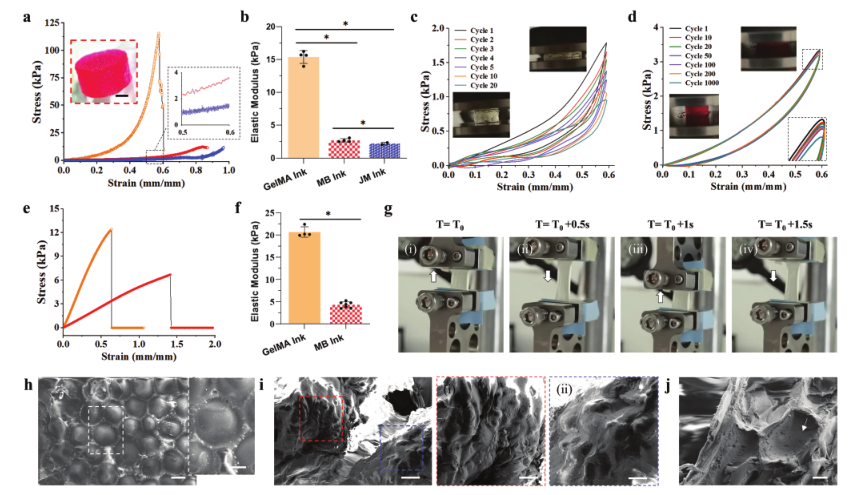
The researchers encapsulated HepG2 and HUVEC in microgel and hydrogel precursors of MB bioink, respectively, to print liver tissue. It was found that HUVEC mainly existed in the inter-microgel region of the MB bioink group.Compared with the pure hydrogel bioink, HUVECs in the MB bioink group exhibited a higher proliferation rate on days 3 and 7, and elongated morphology, forming random tubular shapes through endothelial cell assembly
Blood vessel
structure, overlaid on the surface of HepG2 microgels. There is a relatively mature hepatocyte gene and protein expression profile in MB bioink, which can enhance liver function and liver-specific gene and protein expression. (Figure 5-6)
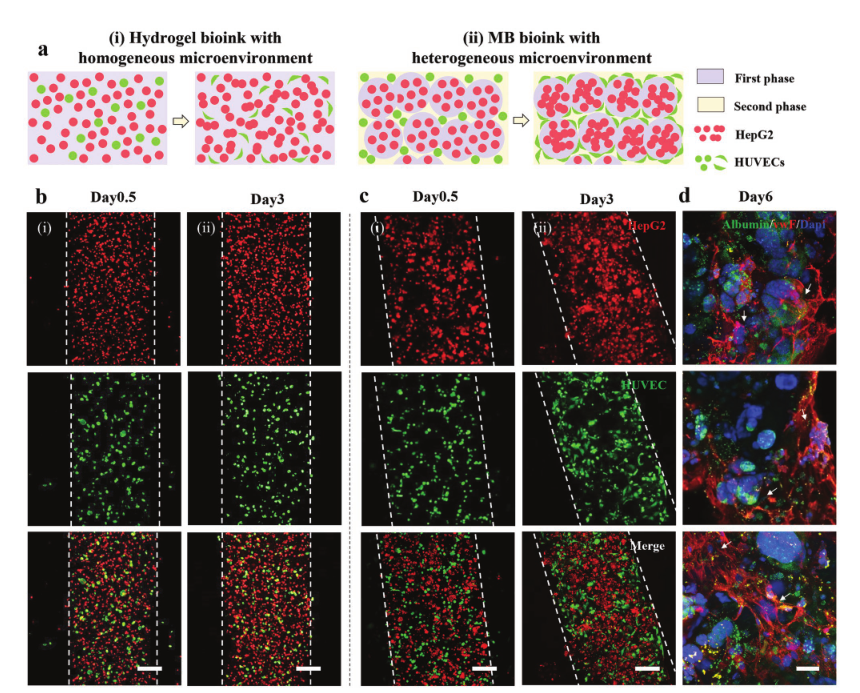
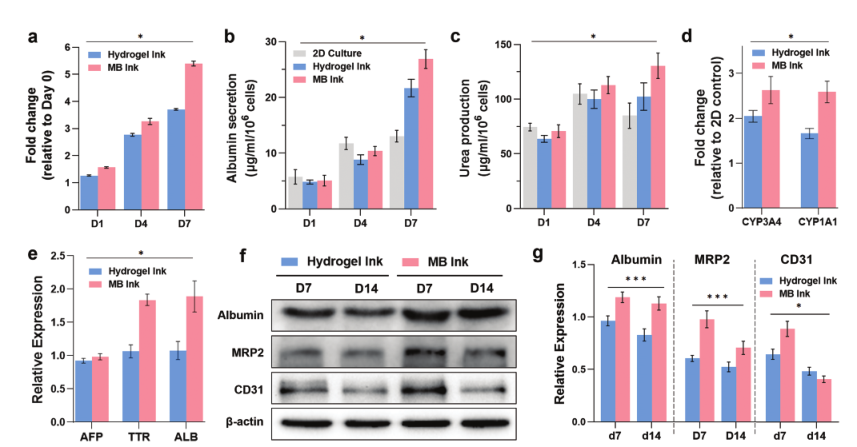
Taken together, the flexible design of this microgel-based biphasic MB bioink with mechanical tunability, hyperelasticity, and a heterogeneous microenvironment is promising for biomedical applications such as tissue engineering and soft robotics.3D bioprintingopens up new possibilities.
Article Source:
https://onlinelibrary.wiley.com/doi/10.1002/adfm.202109810
(responsible editor: admin)


0 Comments for “Tsinghua Zhang and Zhuo Xiong team of Tsinghua University: Cell-loaded microgel-based biphasic bioink for 3D printing”